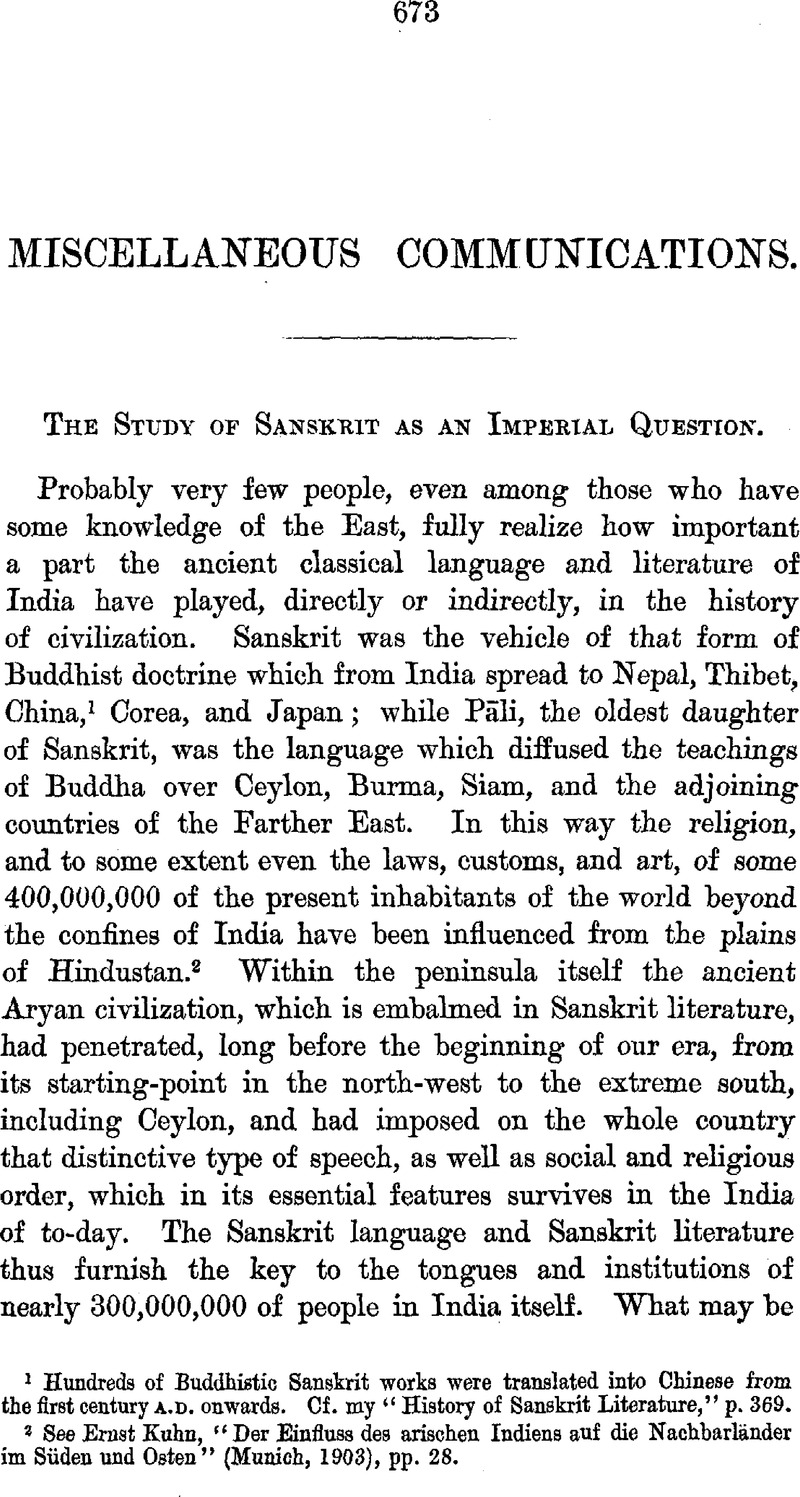Article contents
The Study of Sanskrit as an Imperial Question
Published online by Cambridge University Press: 15 March 2011
Abstract

- Type
- Miscellaneous Communications
- Information
- Copyright
- Copyright © The Royal Asiatic Society 1906
References
page 673 note 1 Hundreds of Buddhistic Sanskrit works were translated into Chinese from the first century a.d. onwards. Cf. my “History of Sanskrit Literature,” p. 369.
page 673 note 2 See Kuhn, Ernst, “Der Einfluss des arischen Indiens auf die Nachbarländer im Süden und Osten” (Munich, 1903), pp. 28.Google Scholar
page 674 note 1 See my “ History of Sanskrit Literature,” chapter xvi (“ Sanskrit Literature and the West”), and the appended bibliography.
page 674 note 2 Cf. Windisch, Ernst, “Ueber die Bedeutung des indischen Alterthums,” Leipzig, 1895.Google Scholar
page 675 note 1 These statistics are taken in round numbers from Dr.Grierson's, “ The Languages of India” (pp. 51–93), Calcutta, 1903.Google Scholar
page 675 note 2 Grierson, op. cit., p. 38.
page 675 note 3 E.g. ‘ fragile’ and ‘ frail’; cf. Grierson, pp. 40 and 60.
page 676 note 1 The well-known Frog hymn, vii, 103, translated in my “ History of Sanskrit Literature,” p. 121 f.
page 677 note 1 The greatest of English Sanskritists, H. T. Colebrooke, was an Indian civilian of the older period: he was in India from 1782 to 1814.
page 677 note 2 These statistics are derived from information supplied to me by the Civil Service Commissioners.
page 678 note 1 An Indian civilian, who had evolved his own philology in the East, once actually mentioned this to me as an interesting linguistic equation.
page 678 note 2 This is a native etymology of the word.
page 679 note 1 That is, ‘ Abode (ālaya) of snow (hima).’
page 683 note 1 Besides many others, such as Fitzedward Hall, Cowell, Ballantyne, Griffith, Tawney, Gough, Peterson.
page 684 note 1 Dr. Th. Bloch in Bengal; Dr. Vogel in the Panjab and United Provinces ; Dr. Stein in the Frontier Province.
page 681 note 1 A young American Sanskrit scholar has, I hear, just been appointed to take Dr. Stein's place.
page 681 note 2 Only two of these are Englishmen by birth.
- 1
- Cited by


